 W
WABS, formerly Asia Broadcast Satellite, is a global satellite operator based in Hong Kong and officially incorporated in Bermuda. Its services include direct-to-home and satellite-to-cable TV distribution, cellular services, and internet services. Operating 6 communication satellites, the satellite fleet currently covers 93% of the world's population including the Americas, Africa, Asia Pacific, Europe, the Middle East, Russia and Commonwealth of Independent States.
 W
WABS-3A is a communications satellite that is operated by Asia Broadcast Satellite, providing coverage in the Americas, the Middle East, and Africa, as well as globally for TV distribution, cellular services, and maritime services. The satellite is the first commercial communications satellite in orbit to use electric propulsion, providing a significant weight savings.
 W
WAMOS-6 was an Israeli communications satellite, one of the Spacecom AMOS series, that was built by Israel Aerospace Industries (IAI), a defense and aerospace company.
 W
WArabsat-6A is a geostationary communications satellite operated by Arabsat. The satellite was built by Lockheed Martin Space Systems on a modernized A2100 bus. The satellite was successfully launched from Kennedy Space Center LC-39A aboard Falcon Heavy on April 11, 2019.
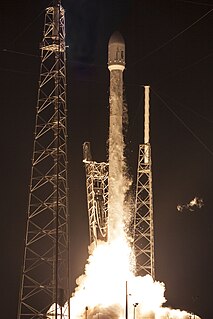 W
WAsiaSat 6 / Thaicom 7 is a geostationary communications satellite which is operated by the Asia Satellite Telecommunications Company (AsiaSat) and was launched into orbit on 7 September 2014. The satellite project was developed in cooperation between satellite operators AsiaSat and Thaicom. AsiaSat owns half of the satellite's 28 transponders which are marketed as AsiaSat 6. The other half of the satellite is owned by Thaicom and is marketed as Thaicom 7. AsiaSat's part of the satellite is operated under license of the China (PRC), whereas Thaicom's part is operated under license of Thailand.
 W
WAsiaSat 8 then AMOS-7 is a Hong Kong-turned-Israeli geostationary communications satellite which is operated by the Asia Satellite Telecommunications Company (Asiasat).
 W
WThe Bangabandhu Satellite-1 (Bangabandhu-1) is the first Bangladeshi geostationary communications and broadcasting satellite. It is named after the father of the nation, Bangabandhu Sheikh Mujibur Rahman. It was manufactured by Thales Alenia Space and launched on 12 May 2018. The satellite was the first payload launched by a SpaceX Falcon 9 Block 5 rocket. Bangladesh Govt. feels immensely proud for having been successful in launching their first ever satellite into space.
 W
WBeresheet was a demonstrator of a small robotic lunar lander and lunar probe operated by SpaceIL and Israel Aerospace Industries. Its aims included inspiring youth and promoting careers in science, technology, engineering, and mathematics (STEM), and landing its magnetometer, time capsule, and laser retroreflector on the Moon. The lander's gyroscopes failed on 11 April 2019 causing the main engine to shut off, which resulted in the lander crashing on the Moon. Its final resting position is 32.5956°N, 19.3496°E.
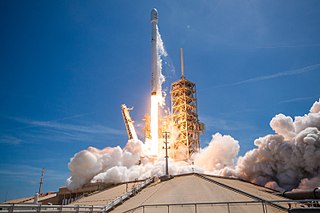 W
WBulgariaSat-1 is a geostationary communications satellite operated by Bulgaria Sat and manufactured by SSL. The satellite will provide high definition and ultra-high-definition television, very-small-aperture terminal (VSAT) communications, satellite news gathering relays, and other communications services, primarily to the Balkan Peninsula and Central/Western Europe.
 W
WCascade, Smallsat and Ionospheric Polar Explorer (CASSIOPE), is a Canadian Space Agency (CSA) multi-mission satellite operated by the University of Calgary. The mission development and operations from launch to February 2018 was funded through CSA and the Technology Partnerships Canada program. In February, 2018 CASSIOPE became part of the European Space Agency's Swarm constellation through the Third Party Mission Program, known as Swarm Echo, or Swarm-E. It was launched September 29, 2013, on the first flight of the SpaceX Falcon 9 v1.1 launch vehicle. CASSIOPE is the first Canadian hybrid satellite to carry a dual mission in the fields of telecommunications and scientific research. The main objectives are to gather information to better understand the science of space weather, while verifying high-speed communications concepts through the use of advanced space technologies.
 W
WCOSMIC-2 also known as FORMOSAT-7, is the constellation of satellites for meteorology, ionosphere, climatology, and space weather research. FORMOSAT-7 is a joint US-Taiwanese project including National Space Organization (NSPO) on the Taiwanese side and the National Oceanic and Atmospheric Administration (NOAA) and the United States Air Force (USAF) on the US side. FORMOSAT-7 is the successor of FORMOSAT-3 The six satellites of the constellation were launched 25 June 2019 on a Falcon Heavy rocket. They reached their designated mission orbits in February 2021, after eighteen months of gradual orbital adjustments.
 W
WThe Deep Space Atomic Clock (DSAC) is a miniaturized, ultra-precise mercury-ion atomic clock for precise radio navigation in deep space. It is orders of magnitude more stable than existing navigation clocks, and has been refined to limit drift of no more than 1 nanosecond in 10 days. It is expected that a DSAC would incur no more than 1 microsecond of error in 10 years of operations. It is expected to improve the precision of deep space navigation, and enable more efficient use of tracking networks. The project is managed by NASA's Jet Propulsion Laboratory and it was deployed as part of the U.S. Air Force's Space Test Program 2 (STP-2) mission aboard a SpaceX Falcon Heavy rocket on 25 June 2019.
 W
WDemonstration and Science Experiments (DSX) was a small spacecraft developed by the U.S. Air Force Research Laboratory's Space Vehicles Directorate to perform experiments to study the radiation environment in medium Earth orbit.
 W
WEs'hail 2 is a Qatari satellite, launched aboard a SpaceX Falcon 9 rocket on November 15, 2018. Es'hail 2 was built by Japan's Mitsubishi Electric company, and will operate at 26° East longitude along a geostationary orbit to provide direct-to-home television services in the Middle East and North Africa region. The satellite will feature 24 Ku-band and 11 Ka-band transponders to provide direct broadcasting services for television, government and commercial content distribution. In addition to commercial services, the payload of Es'hail 2 includes a linear transponder with a bandwidth of 500 kHz and 8MHz for the amateur radio satellite service, with uplink on 2.4 GHz and downlink on 10.45 GHz.
 W
WEu:CROPIS was a life science satellite developed by the German Aerospace Center (DLR) and intended to investigate the possibility of growing plants in different levels of gravity, such as that of the Moon and Mars, as a sustainable food source using human urine for moisture and as the source of fixed nitrogen.
 W
WFormosat-5 is an Earth observation satellite operated by the National Space Organization (NSPO) of Taiwan. It is NSPO's first indigenously developed remote sensing satellite.
 W
WThe Green Propellant Infusion Mission (GPIM) was a NASA technology demonstrator project that tested a less toxic and higher performance/efficiency chemical propellant for next-generation launch vehicles and CubeSat spacecraft. When compared to the present high-thrust and high-performance industry standard for orbital maneuvering systems, which for decades, have exclusively been reliant upon toxic hydrazine based propellant formulations, the "greener" hydroxylammonium nitrate (HAN) monopropellant offers many advantages for future satellites, including longer mission durations, additional maneuverability, increased payload space and simplified launch processing. The GPIM was managed by NASA's Marshall Space Flight Center in Huntsville, Alabama, and was part of NASA's Technology Demonstration Mission Program within the Space Technology Mission Directorate.
 W
WHispasat 30W-6 is a Spanish communications satellite by Hispasat that launched on a Falcon 9 on March 6, 2018. It is replacing Hispasat 1D at 30° West longitude and will provide service for television, broadband, corporate networks and other telecommunications applications. The satellite features 4 × SPT-100 plasma propulsion engines.
 W
WInmarsat is a British satellite telecommunications company, offering global mobile services. It provides telephone and data services to users worldwide, via portable or mobile terminals which communicate with ground stations through fourteen geostationary telecommunications satellites. Inmarsat's network provides communications services to a range of governments, aid agencies, media outlets and businesses with a need to communicate in remote regions or where there is no reliable terrestrial network. The company was listed on the London Stock Exchange until it was acquired by Connect Bidco, a consortium consisting of Apax Partners, Warburg Pincus, the CPP Investment Board and the Ontario Teachers' Pension Plan, in December 2019.
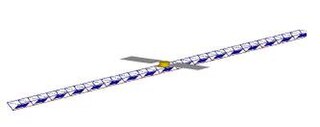 W
WISAT is a spacecraft developed by the U.S. Air Force Research Laboratory's Space Vehicles Directorate to test technology for intelligence, surveillance, and reconnaissance spacecraft.
 W
WIntelsat 35e, also known as IS-35e is an Intelsat high-throughput (HTS) geostationary communications satellite designed and manufactured by Boeing Satellite Systems on the Boeing-702MP satellite bus. It was launched on 5 July 2017.
 W
WThe Iridium satellite constellation provides L band voice and data information coverage to satellite phones, pagers and integrated transceivers over the entire surface of Earth. Iridium Communications owns and operates the constellation, additionally selling equipment and access to its services. It was conceived by Bary Bertiger, Raymond J. Leopold and Ken Peterson in late 1987 and then developed by Motorola on a fixed-price contract from July 29, 1993, to November 1, 1998, when the system became operational and commercially available.
 W
WJCSAT-16 is a geostationary communications satellite operated by SKY Perfect JSAT Group and designed and manufactured by SSL on the SSL 1300 platform. It has a launch weight of 4,600 kg (10,100 lb), a power production capacity of 8.5 kW and a 15-year design life. Its payload is composed of Ku band and Ka band transponders. SKY Perfect JSAT Group plans to use JCSAT-16 as an in-orbit backup satellite for the Ku- and Ka-band satellites serving the Japanese market.
 W
WKoreasat 5A is a South Korean communications satellite operated by KT SAT, a subsidiary of KT Corporation. On 30 October 2017, it was launched on Falcon 9 rocket.
 W
WLightSail is a project to demonstrate controlled solar sailing within low Earth orbit using a CubeSat. The project was developed by The Planetary Society, a global non-profit organization devoted to space exploration. It consists of two spacecraft—LightSail 1 and LightSail 2. LightSail 1 was an engineering demonstration mission designed to test its new sail deployment method in space, it did not perform solar sailing. LightSail 2 is a fully functional spacecraft intended to demonstrate true solar sailing and incorporates the lessons learned from LightSail 1. LightSail is a follow-on project to Cosmos 1—a solar-sail spacecraft designed by The Planetary Society in the early 2000s, which was destroyed during a launch failure in 2005.
 W
WRazakSAT is a Malaysian Earth observation satellite carrying a high-resolution camera. It was launched into low Earth orbit on 14 July 2009. It was placed into a near-equatorial orbit that presents many imaging opportunities for the equatorial region. It weighs over three times as much as TiungSAT-1 and carries a high resolution Earth observation camera. Developed in conjunction with Satrec Initiative, the satellite's low inclination orbit brought it over Malaysia a dozen or more times per day. This was intended to provide greatly increased coverage of Malaysia, compared to most other Earth observation satellites. An audit report released in October 2011 revealed that the satellite had failed after only 1 year of operation.
 W
WSAOCOM is an Earth observation satellite constellation of Argentina's space agency CONAE. Two satellites are already orbiting the Earth in a Sun-synchronous orbit. The second one was launched on 30 August 2020.
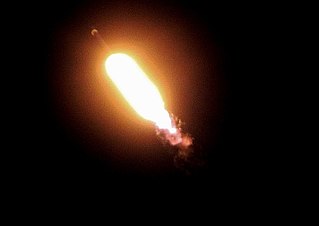 W
WSES-8 is a geostationary Communications satellite operated by SES S.A. SES-8 was successfully launched on SpaceX Falcon 9 v1.1 on 3 December 2013, 22:41:00 UTC.
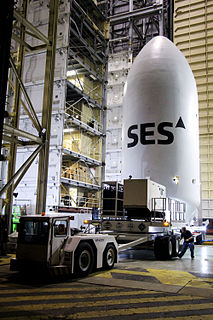 W
WSES-9 is a geostationary communications satellite operated by SES S.A. It was launched from Cape Canaveral SLC-40 by a Falcon 9 Full Thrust launch vehicle on 4 March 2016.
 W
WSES-10, is a geostationary communications satellite awarded in February 2014, owned and operated by SES S.A. and designed and manufactured by Airbus Defence and Space on the Eurostar-3000 satellite bus. It is positioned at the 67° West position thanks to an agreement with the Andean Community to use the Simón Bolivar-2 satellite network. It replaces AMC-3 and AMC-4 to provide enhanced coverage and significant capacity expansion.
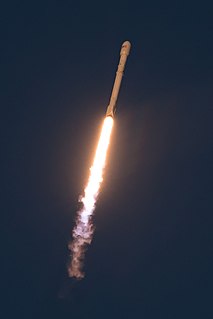 W
WSES-11 / EchoStar 105 is a geostationary communications satellite operated by SES S.A. and EchoStar and designed and manufactured by Airbus Defence and Space. It has a mass of 5,200 kg (11,500 lb) and has a design life of at least 15 years.
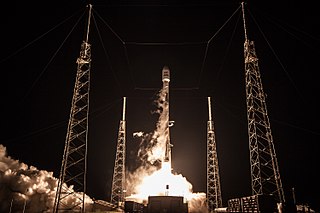 W
WSES-12 is a geostationary communications satellite operated by SES S.A.
 W
WTelstar 19V (Telstar 19 Vantage) is a communication satellite in the Telstar series of the Canadian satellite communications company Telesat. It was built by Space Systems Loral (MAXAR) and is based on the SSL-1300 bus. The satellite was designed to provide additional capacity over the North Atlantic region. As of 26 July 2018, Telstar 19V is the heaviest commercial communications satellite ever launched, weighing at 7,076 kg (15,600 lbs) and surpassing the previous record, set by TerreStar-1 (6,910 kg/15230lbs), launched by Ariane 5ECA on 1 July 2009.
 W
WTHAICOM 6 is a Thai satellite of the Thaicom series, operated by Thaicom Public Company Limited, a subsidiary of INTOUCH headquartered in Bangkok, Thailand. THAICOM 6 is colocated with Thaicom 5 at 78.5 degrees East, in geostationary orbit. The total cost for the satellite is US$160 million.
 W
WTHAICOM 8 is a Thai satellite of the THAICOM series, operated by Thaicom Public Limited Company, a subsidiary of INTOUCH, and is considered to be the 8th THAICOM satellite headquartered in Bangkok, Thailand.
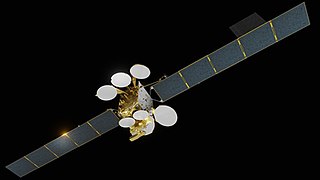 W
WTürksat 5A, is a Turkish communications satellite, operated by Türksat A.Ş. for commercial and military purposes.